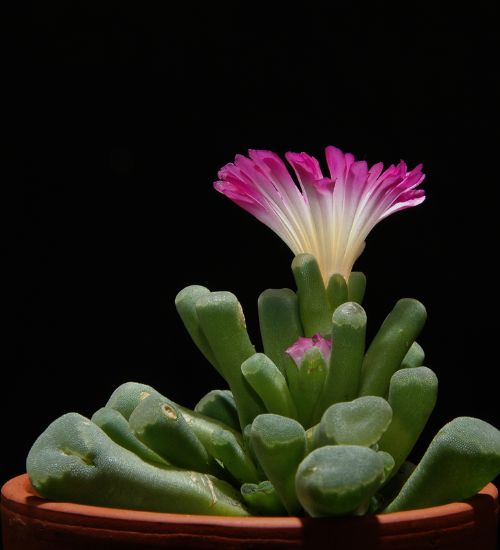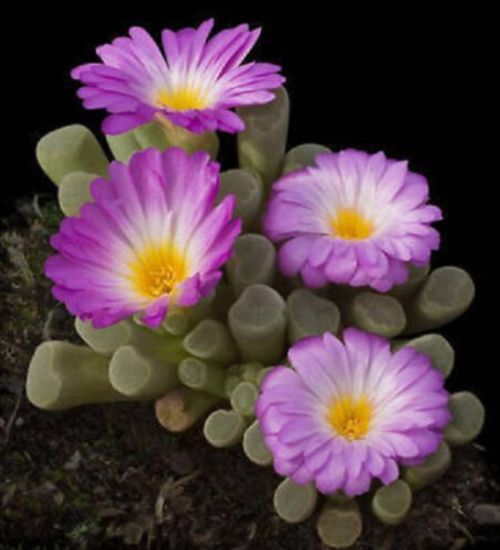Sun: full sun to partial shade
Water: Typical water needs for a succulent
Temperature: Zone 9a from 20° F to 25° F (-6.7 ° C to -3.9° C) to Zone 11b from 45° F to 50° F (7.2° C to 10° C)
Winter Survival: Not cold hardy
Propagation: leaves, division
Flower: in the Winter.
Flower Type: white, purple
Toxic: Generally non-toxic to humans and animals
Dormant: winter
Space Requirement: Indoors & Outdoors
Common Problems: Plants may rot if overwatered
Where to buy Frithia Pulchra?
Basc Care for Frithia Pulchra
Watering
Watering for Frithia Pulchra is a simple task. It requires Typical water needs for a succulent.
One simple tip for you is that you can use some online apps to check the soil status before you go water your succulents. I would recommend the ThePlantsCheck app, it has some nice features there.
Fertilizing
Only feed this succulent during its active growing seasons which means winter. Use the right fertilizer applied in the right amounts. Applying half-strength balanced fertilizer every month or so is recommended for optimal results.
Do not fertilize during winter as the plant is dormant.
Sun & Location Requirements for "Glasies' and 'Fairy Elephant's Feet'."
Frithia Pulchra needs full sun to partial shade in order to thrive. While this variety needs plenty of bright light, it is important not to place it in direct sunlight for extended periods of time as this can cause damage or scorching to the leaves and stems. A shadier spot with indirect light could be just what "Glasies' and 'Fairy Elephant's Feet'." needs.
Frithia Pulchra is not cold hardy and does not survive in freezing conditions. However, there are certain strategies that can be used to help the plant thrive despite the chill of winter. Proper drainage and insulation are essential for succulent X during periods of extreme cold. Placing a layer of mulch or gravel on the soil around the plant can also help keep it warm.
Any succulents in the group will need a medium space to grow. You can place your pot at your table or window. Since this plant needs more space than mini succulents, you should consider do not plant them together with other succulents/plants.
Frithia Pulchra also benefits from some indirect light throughout the day as well, so make sure you give it enough space to soak up light without becoming too exposed to heat.
Propagation
Propagating succulents with leaves is a satisfying way to obtain new plants. Start by cutting some healthy leaves from the mother plant, then place them on top of potting mix and water regularly. In time you'll have vibrant succulents that you grew yourself!
Toxicity

Frithia Pulchra is generally non-toxic to humans and animals. However, it is important to be aware that certain parts of the plant may contain toxins which can cause mild skin irritation. It is advised that you keep the plants away from small children or pets, as they may unknowingly ingest them and suffer ill effects.


